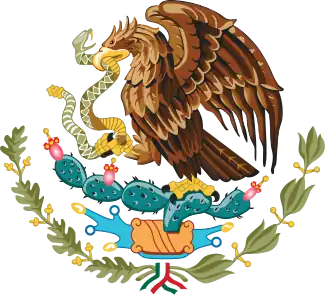| Part of a series on the |
| Culture of Mexico |
|---|
 |
| Society |
| Topics |
| Symbols |
The National Monuments of Mexico refers to the buildings and monuments that are protected heritage of the nation, and are declared as such in the Registro Público de Monumentos y Zonas Arqueológicos e Históricos maintained by the Instituto Nacional de Antropología e Historia and the Registro Público de Monumentos y Zonas Artísticos maintained by the Instituto Nacional de Bellas Artes y Literatura.[1]
Archeological monuments and zones
"Archaeological" refers to paleontological and pre-Hispanic structures, zones, remnants, etc.[1]
Historical monuments
"Historical" refers to post-Conquest 16th- to 19th-century structures, zones, documents, etc.[1]
Due to their importance in Mexico's art history, all works by José María Velasco Gómez, Dr. Atl, José Clemente Orozco and Diego Rivera were declared historical monuments.[2]
Artistic monuments
"Artistic" refers to properties that are of significant aesthetic value.[1] The valuation of aesthetic value is left to the Comisión Nacional de Zonas y Monumentos Artísticos (National Commission of Artistic Zones and Monuments). This commission is composed of the Director of INBAL, a representative of the Secretaría de Desarrollo Urbano y Ecología, a representative of UNAM, and three individuals affiliated with the arts picked by the Director.[1]
Some works from artists such as Frida Kahlo, David Alfaro Siqueiros and Remedios Varo have been deemed artistic monuments.[2]
References
- 1 2 3 4 5 "LEY FEDERAL SOBRE MONUMENTOS Y ZONAS ARQUEOLOGICAS, ARTISTICOS E HISTORICOS". Secretariat of Public Education. Retrieved November 24, 2014.
- 1 2 "In love with Diego or Frida? A brief look at Mexican art regulations". Cultural Assets. 26 November 2014. Retrieved 8 January 2021.